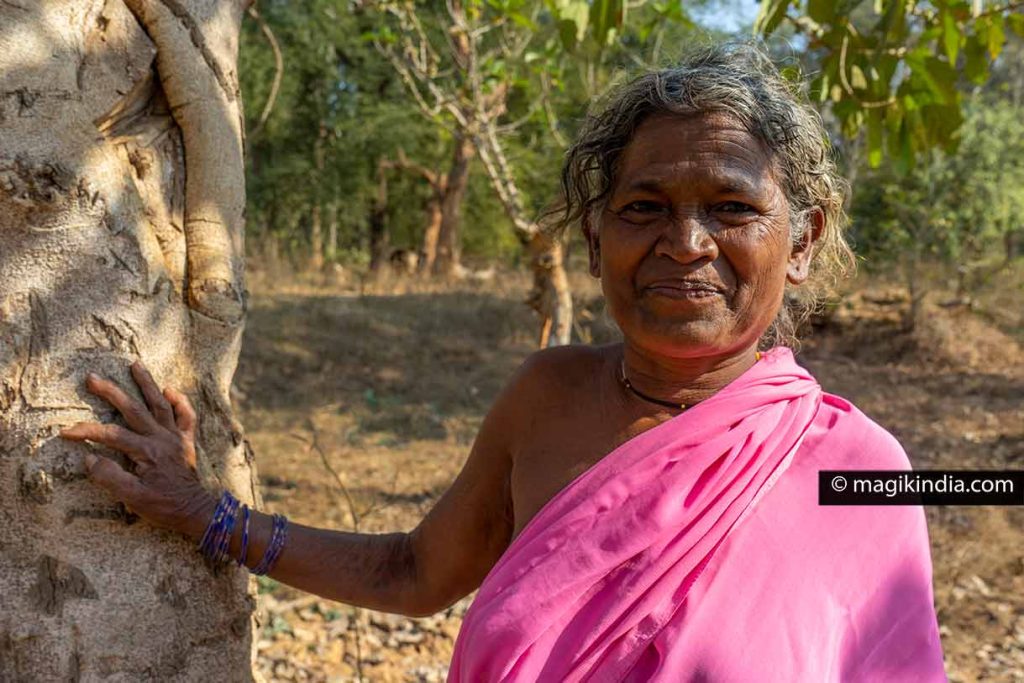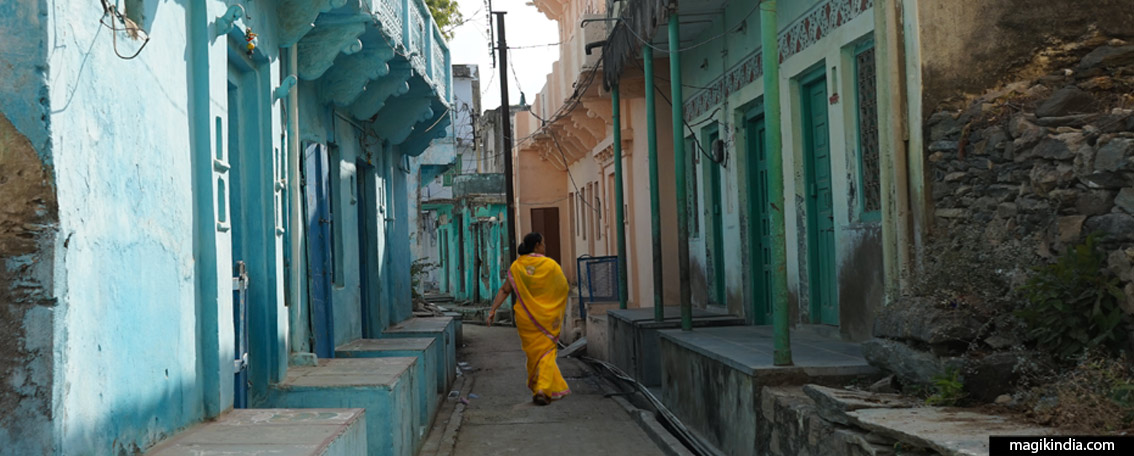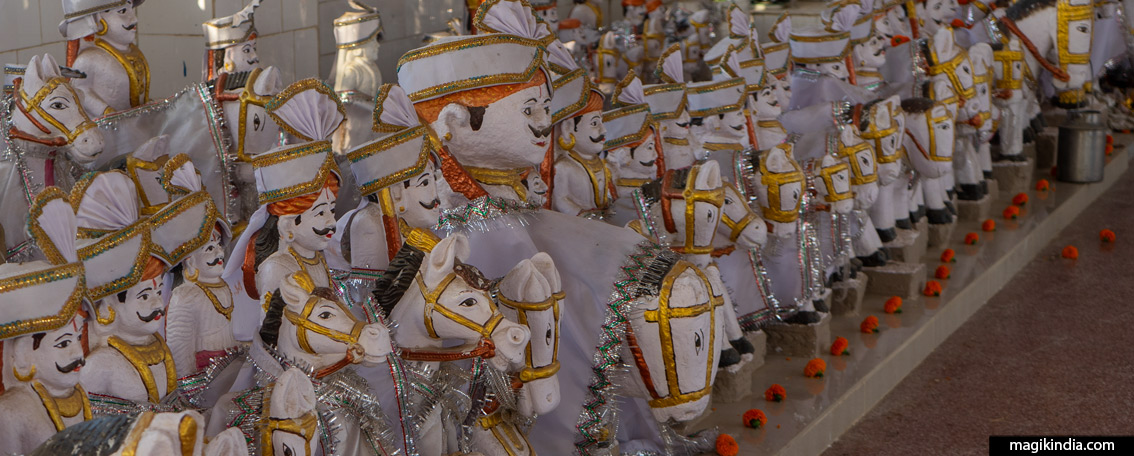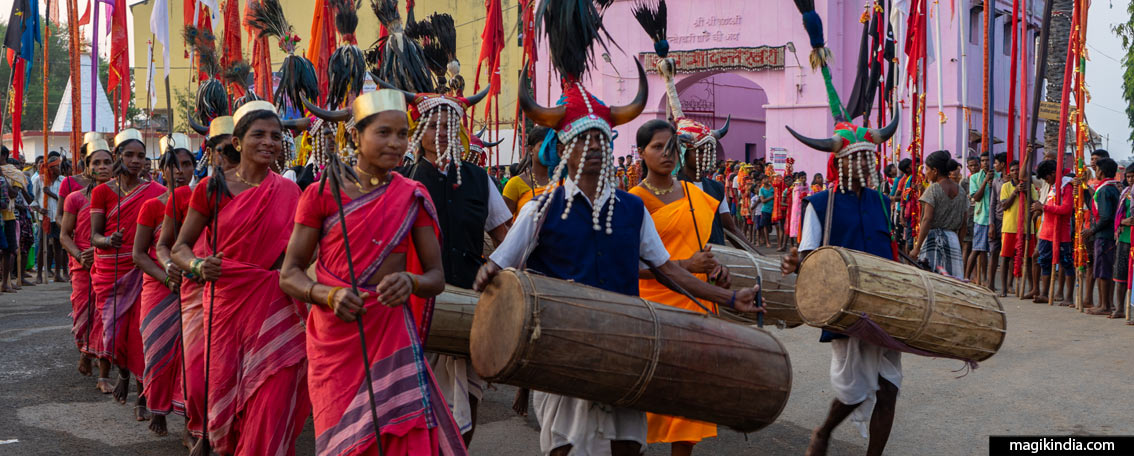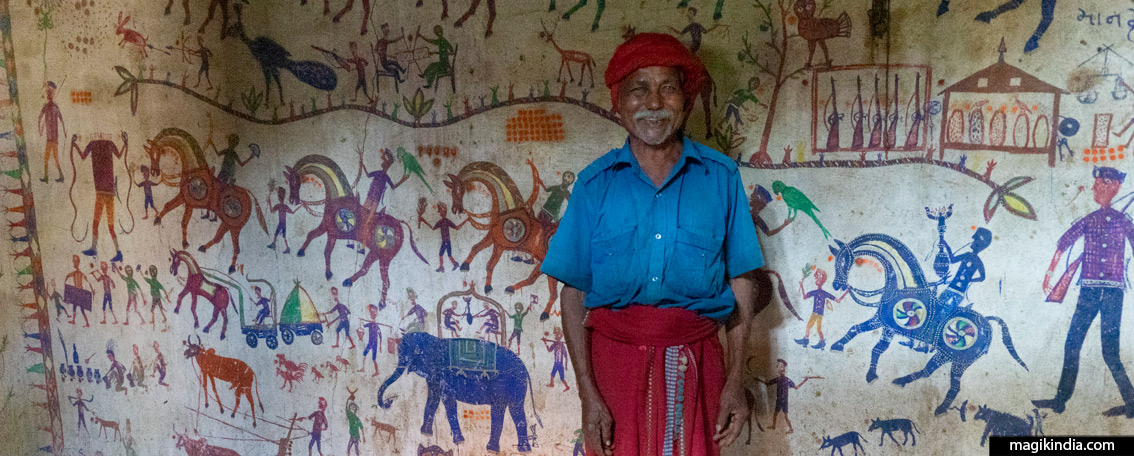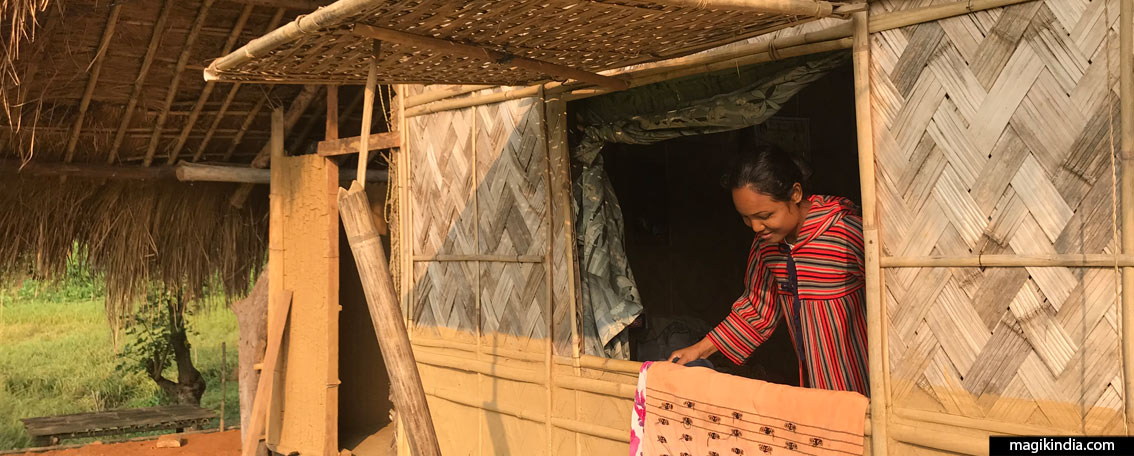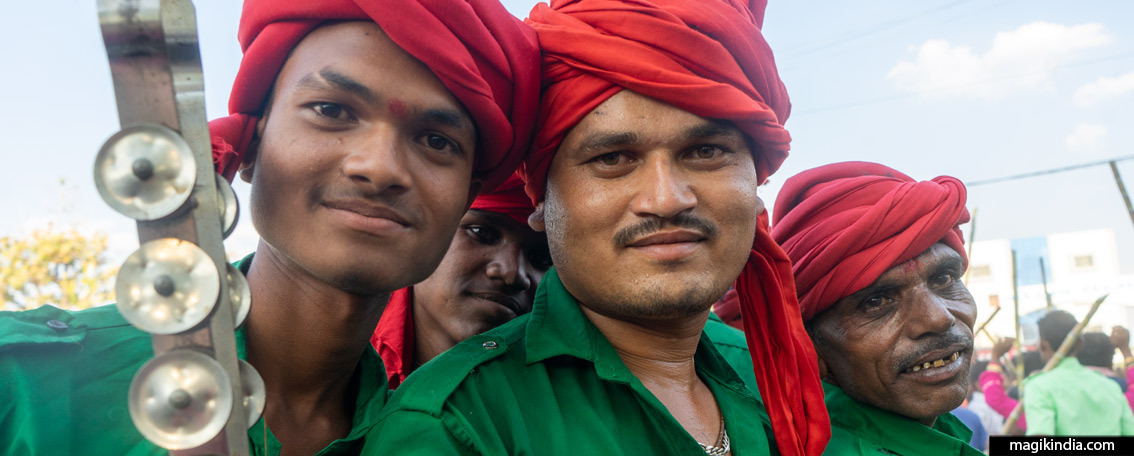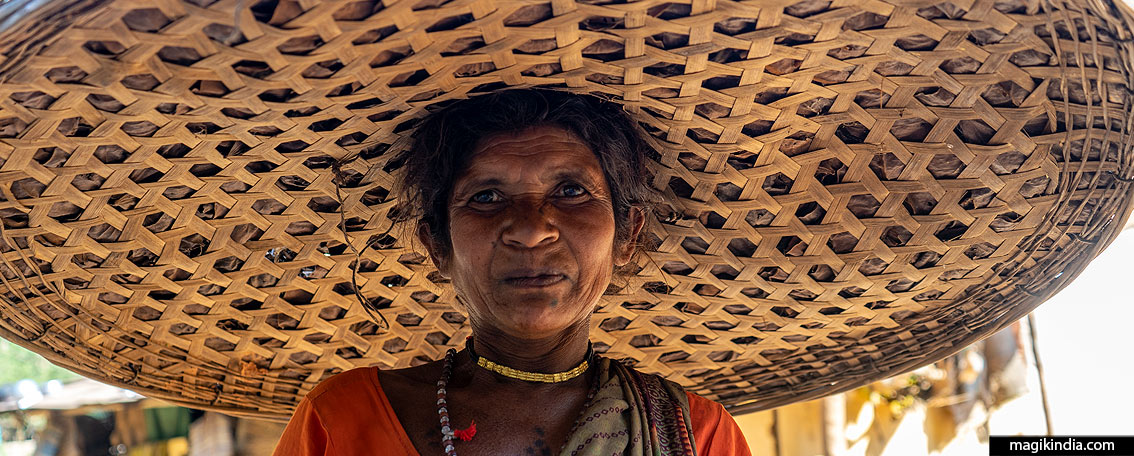
My stay with the Dhurwa, Chhattisgarh
If you are looking for a rather unknown little corner of India, Chhattisgarh will not disappoint you. It is one of the few states in India where a large part of the population is composed of “Adivasi”, that is to say indigenous peoples. During my third trip in Chhattisgarh, I was lucky enough to stay with the Dhurwa community in the Bastar region, about fifty kilometers from Jagdalpur. No need to tell you that it was an enriching experience just like all my other encounters with the different cultures of India.
The path that leads me to the village of Dhurwa crosses a thick jungle consisting of tall secular trees. I am on a motorcycle, accompanied by a local guide; a guide is essential to access the isolated villages of Bastar. The road ends in a clearing where a few wooden-roofed houses stand.
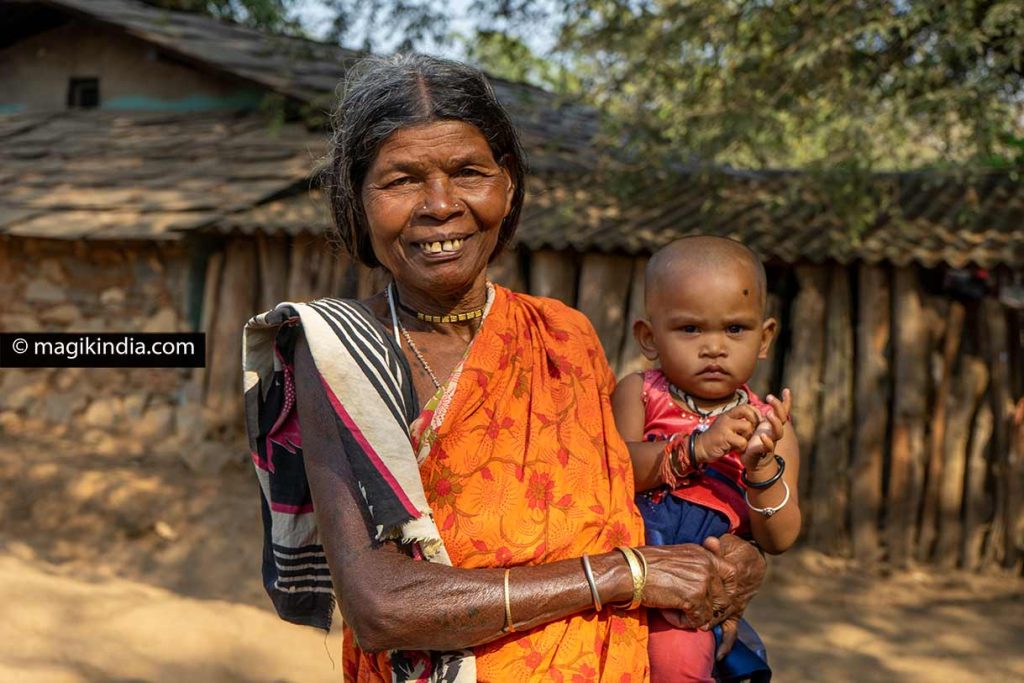
I open the wooden gate of our hosts’ house, which leads onto a yard bounded by long, dried logs. Our host comes to welcome me timidly; here, people are discreet. She holds her grandson in her arms. It’s mid-afternoon and I settle into a tent in the backyard. Since then, a guesthouse has been built, but I’ll tell you about it later.
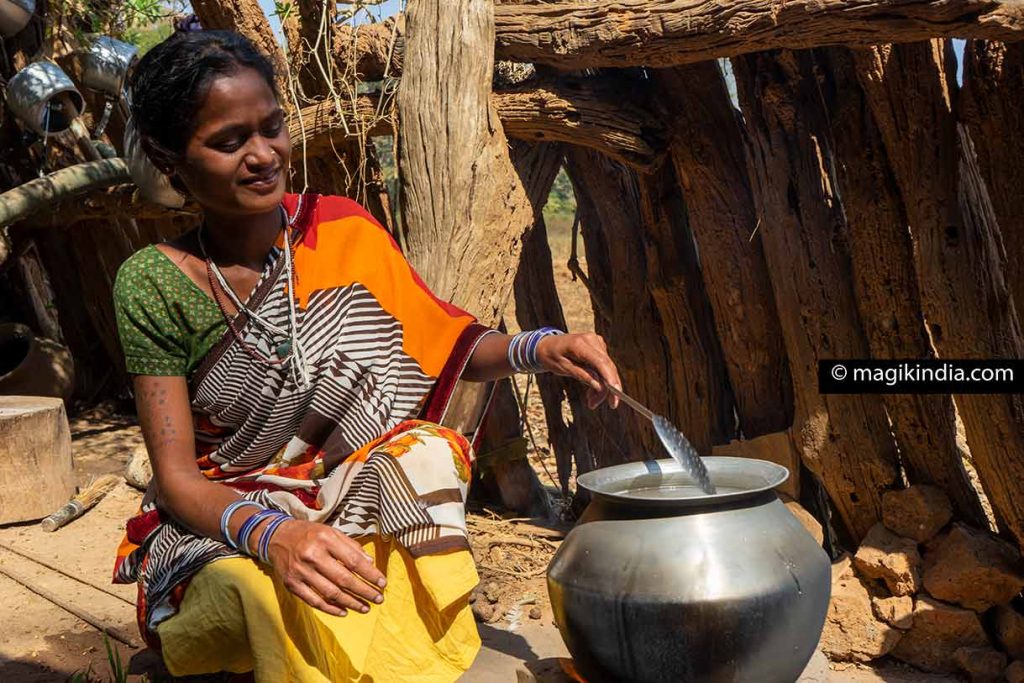
Our wood-fired lunch is being prepared. Vegetable rice on the menu. The rural areas of India offer simple but always very tasty dishes with products coming directly from the organic vegetable garden.
While the dishes are simmering, I venture alone on a path that leads to another group of houses. My goal is to meet people spontaneously and to see how the activities of the village are organized.
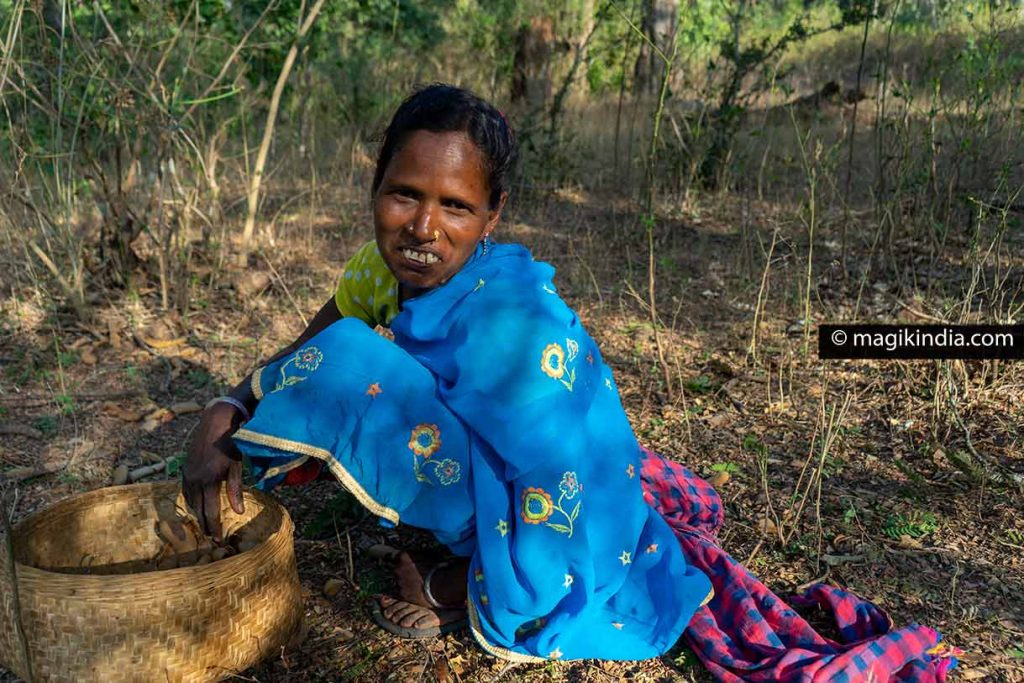
It doesn’t take me long to come across a few locals. Along the path, a lady is picking up imli (tamarind). This fruit is used not only in Indian cuisine, but also as a natural medicine for various digestive disorders. Right next to it, a man collects the pods in large jute bags which he puts on his bike.
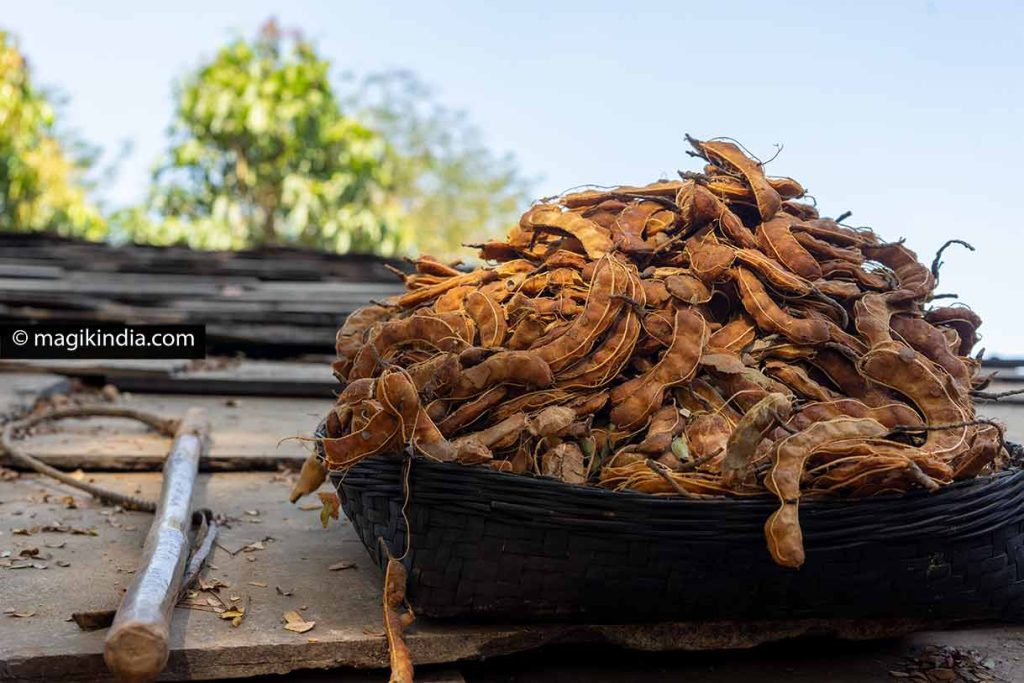
As I carry on my walk, my guide quickly arrives on a motorbike. I can see from the look on his face that he has been worried about my solo getaway. It’s lunch time anyway and we go back together to our hosts.
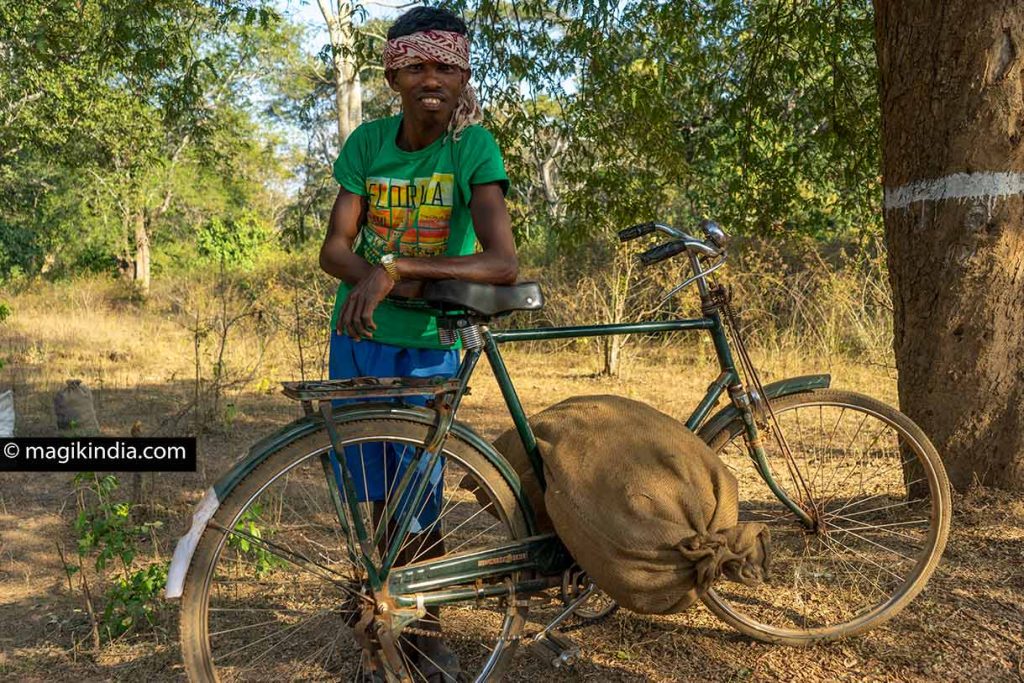
After the meal, I resume my exploration of the village, with my guide this time. We meet the neighbors with whom we share a chai. One of them insists on showing me his archery skills. The Dhurwa or Duruwa are a sub-group of the Gond and, like a large majority of adivasis, this people originally lived on hunting, fishing and agriculture.
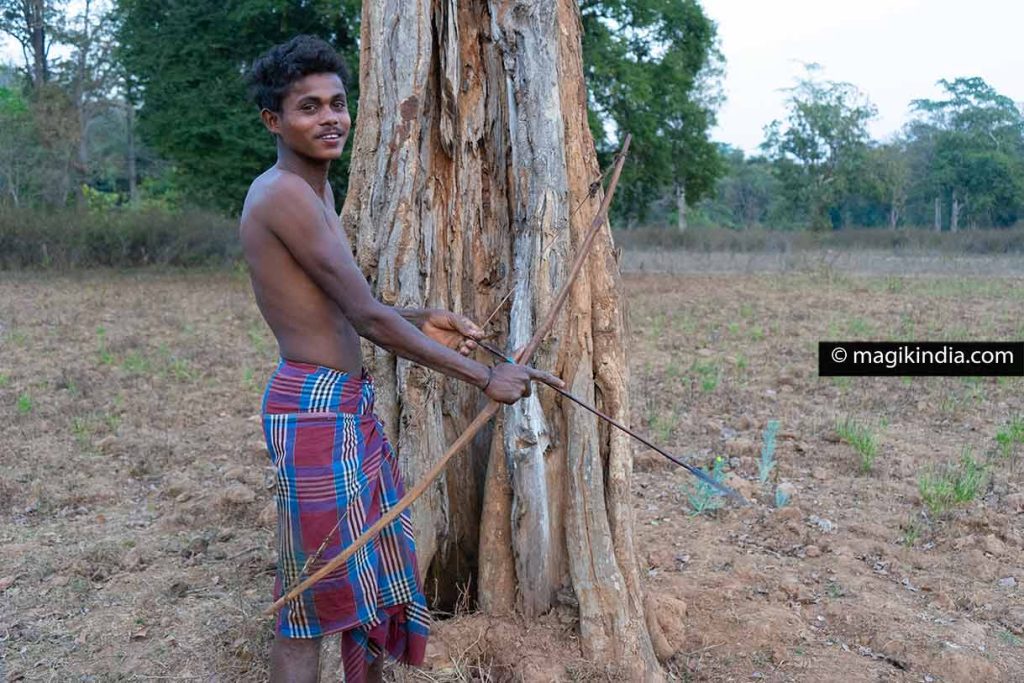
The day passes smoothly meeting people here and there until the evening when we all gathered around the fire sipping the “salphi”, the famous local “beer”.
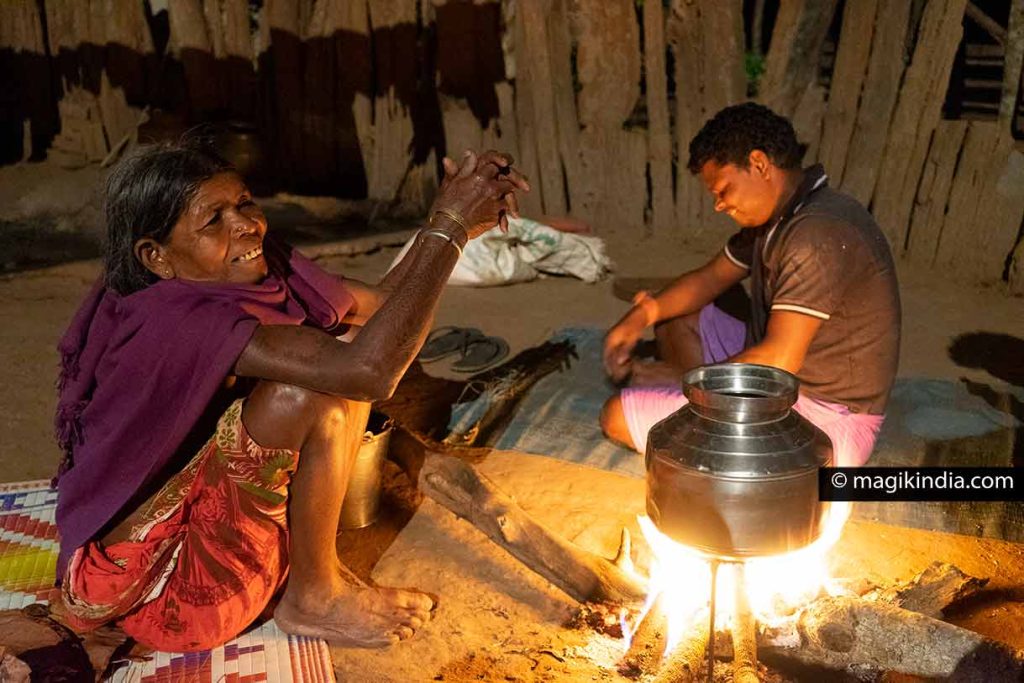
And precisely, the next day, I wake up early so as not to miss the salphi harvest. This sparkling alcoholic drink is obtained by the fermentation of the palm sap. The men climb without a rope up to 20 meters high to harvest it. The sap begins fermenting immediately after collection, in about two hours, its gives an aromatic wine up to 4% alcohol content.
[ The harvest of the Salphi in the Dhurwa village ]
So-called “local” alcohols are very common in the indigenous regions of India and are obtained either, as here, by the fermentation of the palm sap, or by the fermentation of rice such as the “Zutho” in Nagaland or either by the fermentation of fruits such as “Chulli”, the dried apricot alcohol from the Kinnaur region. They are an integral part of the life of the adivasis and are very often incorporated into religious rituals.
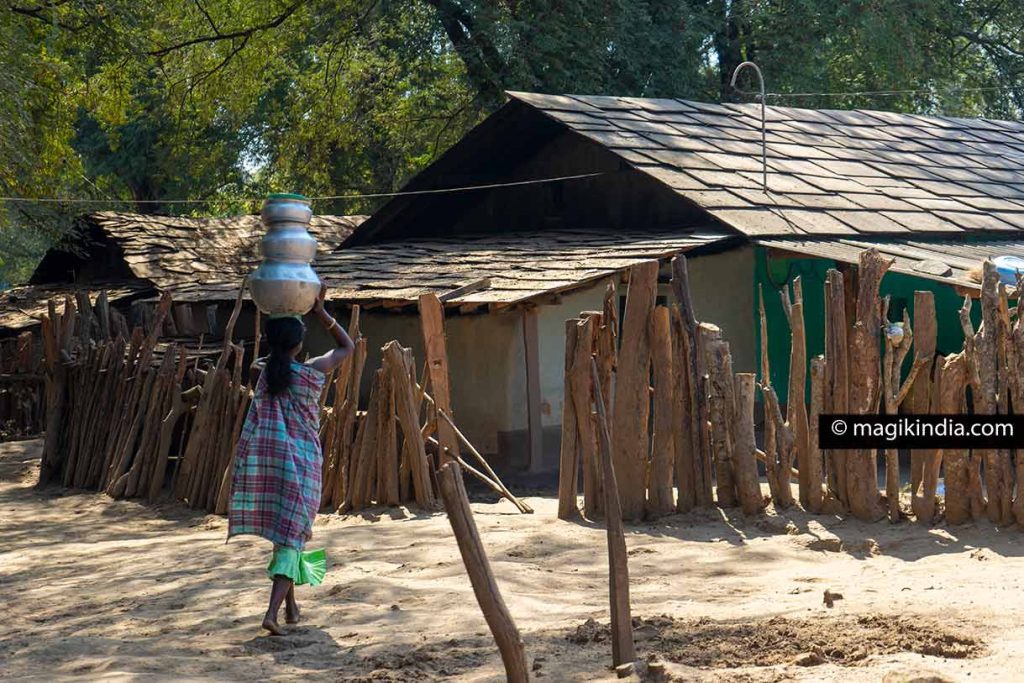
During the day, I take my time, village life has this magical power to make you live in the present moment. I take this opportunity to take some photos of the family who hosts me.
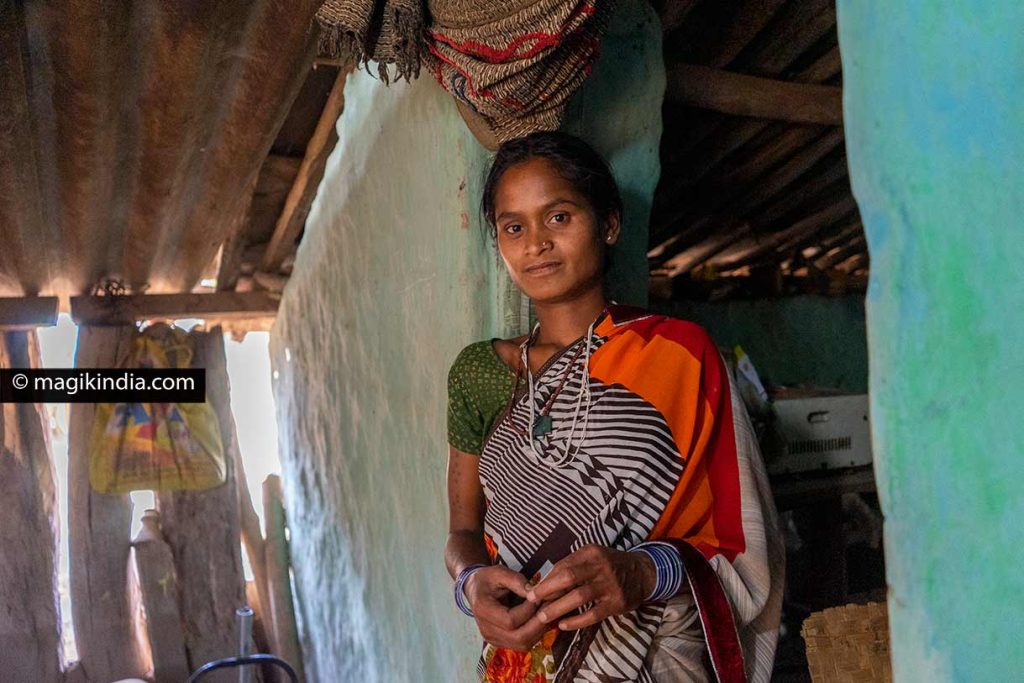
However, my thirst to learn more about the Dhurwa community drives me to other parts of the village. In particular, I meet a couple of basket weavers who, for the occasion, do me the honor of wearing their traditional costumes.

My eyes inevitably stop on the jewels of the lady, the gold necklace in particular, whose pendant is a peacock set with a ruby. Stunning ! There is always beauty in simplicity.
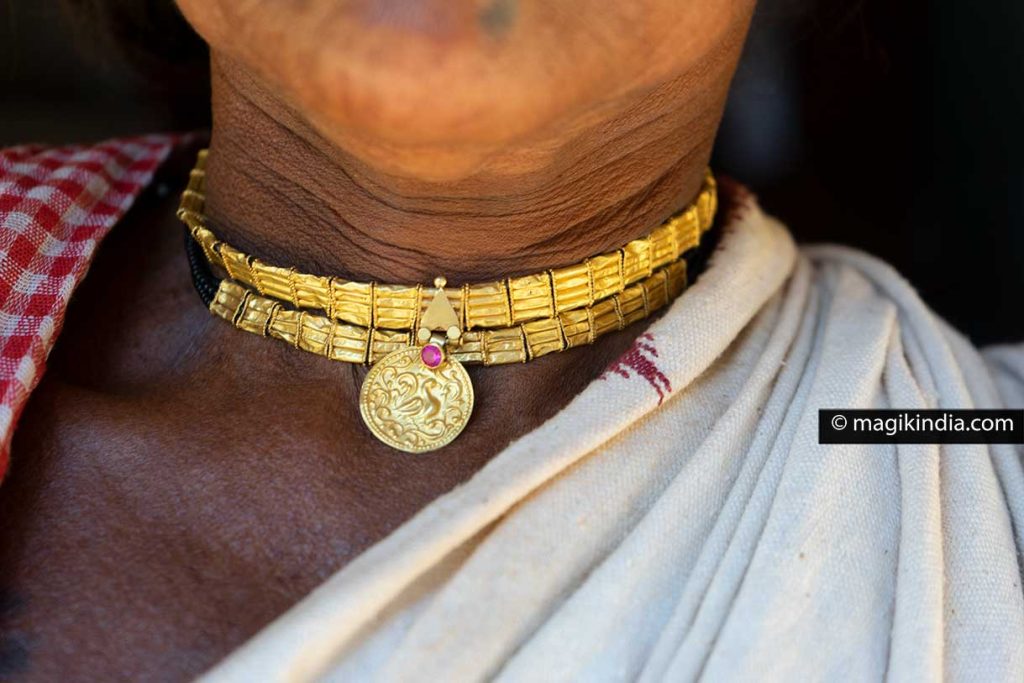
As I pack my photographic equipment, the lady arrives with a huge braided bamboo hat that must be about 1.20 m in diameter. My guide explains to me that this is a monsoon hat used like an umbrella when working in the fields. Very ingenious, I must say and of course, I do not fail to take another photo of the lady.

There would still be so many things to tell about this stay, but wouldn’t it be better to come and experience it all for yourself?
As I told you above, since my last visit, my guide and his wife have built a guesthouse in this village and warmly welcome you and make you discover the culture and traditions of their community. So, when are you coming? 🙂
